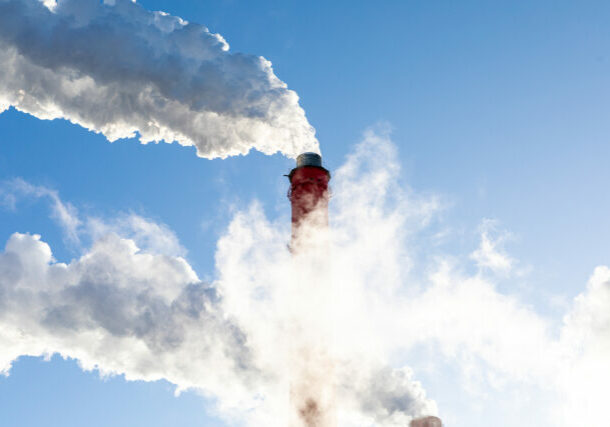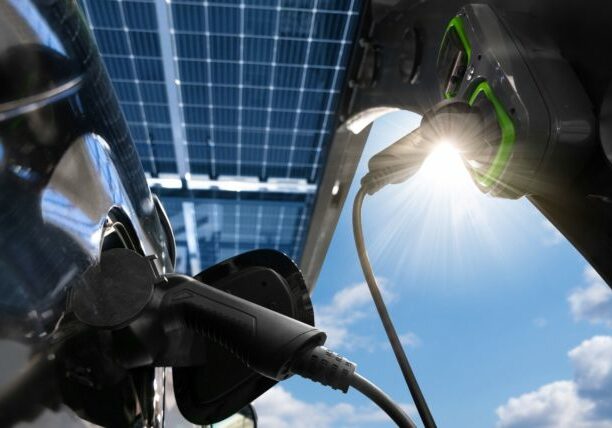January 18, 2023
Looking Back: Five Energy Equity Takeaways from 2022
By Seth Mullendore
A new year is upon us. This will be a big year for Clean Energy Group (CEG). We were founded 25 years ago, back in 1998 when solar and wind were more of a hopeful concept than the disruptive reality they have become today. Considering the events of last year, 2023 looks to be a pivotal year for the energy sector as well. Major new legislation is poised to usher in a wave of additional federal support for the clean energy transition, and many state policies, programs, and planning processes are incorporating stronger language to prioritize energy equity, but 2022 also saw the rise of false solutions and emerging battlelines as fossil-fuel interests fight to remain relevant.
Here are five key takeaways from 2022 that will impact the advancement of CEG’s clean energy equity work in 2023.
#1: Inflation Reduction Act
No 2022 energy list would be complete without mentioning the Inflation Reduction Act (IRA). The massive bill includes an estimated $369 billion in funding and incentives for a wide range of energy technologies. Of particular note is the ten-year extension of the clean energy Production Tax Credit (PTC) and Investment Tax Credit (ITC), creating a decade of market certainty for clean energy developers. Among many other things, the IRA extends ITC eligibility to stand-alone energy storage, allows for easier transferability of tax credits and a direct payment option for nonprofit entities, and includes incentive adders for energy communities and low-income communities. There is a lot in there, though not all of it is positive, which is discussed more in the False Solutions takeaway below.
We’re still waiting for crucial details about how various programs and incentives will ultimately be rolled out, but it’s safe to say that the IRA is a game changer for the clean energy transition that is likely to further catalyze the shift to solar, wind, and energy storage over the next decade. The legislation’s impact on energy equity – who benefits from clean energy investments and who continues to be unjustly burdened by fossil emissions – is less clear. The intent is there, as justice and equity are prominently featured in the legislation and certain funds are earmarked for disadvantaged communities, and we’re already seeing renewed interest from equity-focused solar and energy storage projects with improved economics under the new incentives. Clean Energy Group and our many allies in the environmental justice space will be monitoring the implementation of programs closely in 2023 and working to ensure that investments and benefits are equitably distributed.
#2: Energy Storage
It’s official, energy storage is here to stay. For the near-term, that largely means lithium-ion batteries, though technology competitors are beginning to gain ground in the stationary storage space.
Despite an ongoing global pandemic, soaring inflation, and supply chain headaches, developers still managed to install record levels of battery storage across the country this year. Recent projections from the Energy Information Administration (which is typically conservative in its renewables and storage projections) expect utility-scale battery capacity to grow by fourfold over the next three years, reaching 30 GW / 111 GWh by 2026. The story is similar for customer-sited, behind-the-meter battery storage projects, particularly residential batteries. California continues to lead the way, with an estimated 81,000 home solar+storage systems operating in the state representing nearly a gigawatt of capacity, but strong markets have emerged in other states as well. We are officially past the days when energy storage was deemed “too expensive” to have a meaningful impact on the energy system, though, without targeted incentives, storage remains unaffordable for most low-income households and community-based organizations.
Two states announced new major storage plans in 2023, New Jersey and New York. In September 2022, the New Jersey Board of Public Utilities released a draft proposal designed to catalyze the development of 2 GW of storage in the state by 2030. While the details have yet to be finalized, the draft proposal includes language and design considerations to help ensure that energy storage projects are developed in and designed to provide benefits to low-income and environmental justice communities. New York released an updated storage roadmap in the final days of 2022, laying out the state’s plan to install 6 GW of energy storage by 2030. The ambitious roadmap stipulates that at least 35% of state storage incentives must go toward supporting projects providing the highest level of benefits to disadvantaged communities, with a focus on reducing harmful emissions from fossil peaker plants.
It is encouraging that state and federal agencies have begun to realize the potential of energy storage in advancing energy equity through enabling local benefits such as reduced air pollution and increased energy resilience, a trend that should continue in 2023 and beyond.
#3: Energy Resilience
Clean Energy Group first began advocating for clean backup power solutions ten years ago, launching the Resilient Power Project in the wake of Superstorm Sandy. At the time, batteries were barely on the radar for energy resilience and few communities outside of the recently impacted Northeast region recognized the pivotal role of energy access during and after severe weather events. Last year, Clean Energy Group had more interest in our technical assistance program to evaluate the viability of solar+storage for resilience in marginalized communities than any prior year, with requests for technical assistance support from community-based partners in nine states and Washington, DC. These requests used to come in regional waves – when a disaster would strike an area, we would see a spike in interest. That has shifted to a constant stream of requests from communities across the country.
In all, Clean Energy Group supported solar+storage assessments for two dozen community-serving facilities in 2022, with 40% of technical assistance support going to BIPOC-led organizations. Beyond severe storms like Sandy and Hurricane Maria, there has been increasing interest in solar+storage for cooling centers to combat the devastating impacts of extreme heat, which contributes to more deaths each year than any other weather-related event.
Solar+storage is now laying down a proven track record as a reliable source of resilient power. When Hurricane Fiona hit Puerto Rico last September, solar+storage kept essential services and emergency response up and running by powering fire stations, health centers, and other community facilities throughout extended grid outages. Sergeant Luis Saez of Fire Station Guánica in Puerto Rico put it well when he said, “We are very thankful for [solar+storage] being here. It got something out of our way – something that we should not be worrying about. When there’s an emergency, we should not be worrying about having power. It makes life so much easier for us. If there’s an emergency we can go out and respond to it and know that when we come back, we will still have power.”
#4: Grid Reliability
Raising concerns about grid reliability, keeping the lights on, has been a constant refrain from the fossil fuel industry and many electric utilities. There was a time when 5% solar and wind penetration was portrayed as a threat to the grid. In May 2022, the California Independent System Operator reported that the state met 99.87% of all electricity load with renewables for a brief period of time, breaking all previous records. Despite ever higher demonstrated levels of renewable penetration and a steadily increasing proliferation of clean, flexible resources (batteries, demand side management, virtual power plants), the specter of “reliability” is still held up as justification to keep gas plants operating in environmental justice communities and continue investing in new fossil infrastructure.
Last year, Clean Energy Group used data from the Environmental Protection Agency to map the injustice of peaker power plant siting, finding that two-thirds of peakers are located in lower-income communities and nitrogen oxide (NOx) emissions rates are 44% higher for peakers located near communities of color. We collaborated with local organizations in Boston, Detroit, and Philadelphia to shine a light on the health disparities of peaker plant emissions in those communities. The clean energy transition will fail if it does not prioritize the retirement of power plants in our country’s most overburdened communities and does not prioritize investment in these communities to develop clean alternatives.
This transition from fossil peakers to clean alternatives began to take effect in New York City in 2022, accelerated by on-the-ground advocacy efforts and targeted opposition by the PEAK Coalition (New York City Environmental Justice Alliance, UPROSE, THE POINT CDC, New York Lawyers for the Public Interest, and Clean Energy Group). New York City residents are subject to emissions from 89 oil and gas peaking units with a capacity of 6 GW spread across 19 power plants, more than any other city in the country. As of the end of 2022, half of those power plants are actively engaged in shifting from fossil fuels to offshore wind and battery storage. Federal and state commitments to emissions reductions and support for enabling clean energy programs should further accelerate this transition in 2023.
#5: False Solutions
Solar and wind are now the least expensive sources of electricity generation on the grid. Energy storage is being deployed by the gigawatts each year. Study after study indicates that the US can achieve at least 80% to 90% emissions reductions using existing renewable and storage technologies. These facts make it particularly disappointing that the federal government has chosen to back the industry rush to embrace hydrogen and carbon capture in the electricity sector. These are expensive, unproven technologies that represent no more than false solutions for electricity generation and will result in serious public health consequences for surrounding communities.
Burning hydrogen in power plants and equipping power plants with carbon capture technologies will do nothing to reduce local air emissions poisoning environmental justice communities. In fact, research and real-world demonstrations have shown that such false solutions will further exacerbate emissions and public health disparities. Even worse, they barely reduce, or in some cases even increase, greenhouse gas emissions.
This is not to say that there may not be a role for hydrogen in decarbonizing certain sectors. There are compelling arguments that hydrogen could be a viable solution for truly challenging sectors like high-heat industrial processes and maritime shipping, but burning it for electricity or to heat homes and businesses is not a viable or clean path forward. As for carbon capture, it is unlikely to be a justifiable solution for any application.
These false solutions will be a battleground for energy justice in 2023 and for years to come.
The Outlook for Energy Equity in 2023
It is too early to definitely say whether or not 2023 will be a year of more inclusive energy programs and policies, more equitable distribution of energy investments, and a reduction in disproportionate harms impacting marginalized communities. It will most likely be a mixed bag, with successes in some areas and declines in others.
However, it is promising that more local, state, and federal decision makers are talking about equity, and more diverse voices are being heard when decisions are being made. Federal actions to prioritize equity in the energy sector, such applying the Justice40 Initiative to energy investments and the Department of Energy’s Energy Storage for Social Equity Initiative, show a real commitment to begin centering and prioritizing energy justice. Grassroots leaders and frontline organizations are increasingly getting the recognition and resources needed to battle entrenched fossil interests and strengthen the communities they serve. As always, there is still much work to be done.














